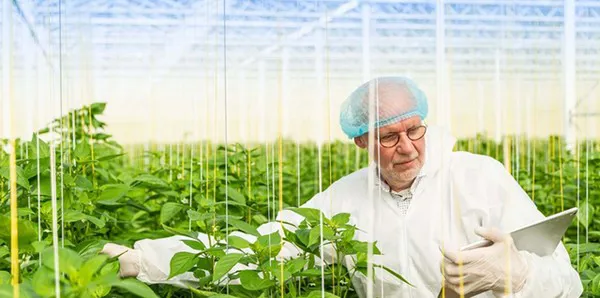During the growing process, growers analyze actual and historical data to determine the best plant strategy for their crop. But what would happen if you had a tool which analyses the historical data for you and advises settings to improve performance and achieve your maximum potential.
Pylot has created this tool and proudly shares that they have made steps ahead to fulfill some ambitious expectations. “Tons of coding, research, mathematical calculations, and joined forces from IT specialists and horticultural experts have resulted in our new feature - Unrealized Potential,” Marc Rooijakkers with Pylot says.
 Marc Rooijakkers, Pylot
Marc Rooijakkers, Pylot
Crop experts
“Together with crop experts, we have developed an algorithm based on plant models and plant recipes, which analyzes completed and current crop cycles. As a result, the model will show the effectiveness of your plant and climate strategy in comparison to the maximum result you could and can achieve, taking actual climate and light conditions into consideration.”

Marc shows that the feature will indicate the difference between the achieved level and what the potential harvest could have been and can be.
“The Unrealized Potential model takes the light productivity of a specific variety (number of joules required to produce 1 kg of fruits), the real sun radiation, artificial light hours, and 24h temperature and calculates the best crop cycle scenario with the highest possible harvest while keeping the desired fruit weight.”

Complicated settings are recalculated in seconds due to a developed algorithm based on practical and commonly used calculations in the horticultural industry. “With the “grey box” principle, we have combined theoretic models and plant recipes with horticultural expertise. You know the input and see the output. This increases trust and acceptance of the results,” he adds.
“Bandwidth settings such as planting density range, fruits per truss range, flowering speed, and ripening time are considered in the calculations. To maximize the reliability and trustworthiness, the grower can adjust the location or crop-specific settings providing valid and reliable results for his crops.”
The output is presented in graphs showing your efficiency and explains where exactly the growing strategy could be improved. Unrealized Potential provides feedback on the valuable parameters: Plant density, Fruits per truss, and your Artificial light strategy. Following the recommended parameters, the maximum harvest potential and most efficient light hours strategy could be achieved based on actual temperature and crop cycle settings.
Marc concludes that Pylot helps to analyze your data and provide recommendations to optimize your strategy. “It’s like driving a modern car. All systems available assist in the task of reaching your destination, but you are still in the driving seat.”

 Pylot
Pylot